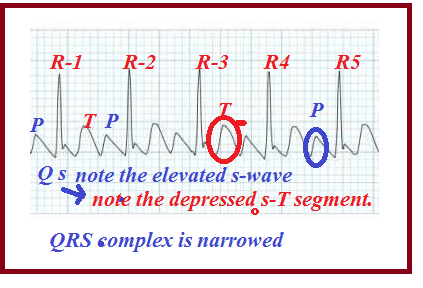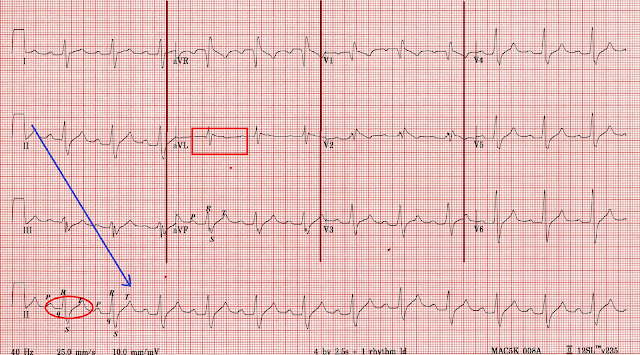A SHORT INTRODUCTION TO KIDNEYS(RENTALS) -1
 |
| Fig-1 |
Kidneys are two bean-shaped excretory organs located against the back muscles in the upper abdominal area. They sit opposite each other at the right and left sides of the spine. The right kidney is fitted a little lower than the left kidney to accommodate the liver. See Fig-1 above.
Despite their smaller sizes the kidneys receive almost 20% of the total cardiac output. They are well supplied with renal arteries which branch from the aorta at the abdominal region. Kidneys after receiving about 20 to 25% of the cardiac output it filters and cleans the blood from many harmful wastes and impurities such as urea, creatinine, hippurates, uric acid, and many metabolic medical wastes. Also kidneys excrete excess minerals to keep the balance of the electrolytes in the body. After cleaning the blood they consume 3% of the blood for their own oxygen need. The remaining cleaned and deoxygenated blood is drained into the veins and return back to the heart. (See Fig.2 above).
Blood Supply To Kidneys(The Renal Circulation):-
 |
| Fig 2 |
THE NEPHRONS AND THE URINE FORMATION:-
 |
| Fig-3 A |
 |
| Fig 3B |
The two figures are shown above (3A and 3B)are for illustrative purposes only. The nephrons are the fundamental units of the kidneys. There are about one million nephrons in each kidney.
These number of nephrons are really the Grace and Gift of the Almighty to the human lives. In our everyday life, we are abusing our kidneys. By our unhealthy eating and drinking habits, stress situations, the dirty atmosphere we are killing the nephrons smoothly. To combat these abuses God has given us this huge number of nephrons with a Great Kindness. All praises to the Almighty God.
As shown in the figures above a nephron is composed of the following parts.
1.The Bowman's Capsule:
The cup-shaped head like part. This is the first part of the nephron. It is like a sac enclosing the glomerulus. The sac is 8 to 10 nm. The blood that enters into this portion is already ultra-filtered by leaving back the macrocells and proteins. The filtrate contains 0.05 % of proteins.
2.Glomerulus:-
A small ball-shaped knitted form of tiny capillaries fitted inside the Bowman's capsule. Blood is filtered in this portion of the nephron.
3.Proximal Convoluted Tubule:-
Pre or Proximal Convoluted Tubule (PCT) is the coiled tubule immediately following down the Bowman's Capsule. In this part when the filtrate passes, important nutrients like glucose, and proteins in the form of peptides are reabsorbed back into the blood. Water is absorbed along with sodium and bicarbonate ions in this part. Further in this region urea, chloride, potassium, lactate, phosphate, and bicarbonate are also absorbed back into the blood.
4.Loop Of Henley (Descending):-
This is the narrowed descending portion of the PCT.
After some water is absorbed along with various ions mentioned above in the PCT a one-third of the filtrate which is hypotonic reaches in this portion. Here the tubule is highly permeable to water only and not the solute. Water is reabsorbed back to the blood by leaving a highly concentrated filtrate to pass down into the bottom of the loop. Afterward the hypertonic filtrate passes upwards to the ascending loop of Henley.
5.Loop of Henley (Ascending):-
In this portion the loop cells are permeable only o the solutes and not to the water. Thus solutes like sodium, potassium, and chloride ions are reabsorbed back to the blood, with the exchange of hydrogen out into the filtrate. Hence the filtrate is more and more diluted to hypotonic with water.
In general the movement of the luminal fluid in the loop region is sufficiently slow in order to maintain the concentration of the urine to keep the osmolarity balance in the medulla. Sodium, potassium, calcium, chloride, and bicarbonate ions are reabsorbed in the ascending loop of Henley.
6.Distal Convoluted Tubule (DCT):-
These number of nephrons are really the Grace and Gift of the Almighty to the human lives. In our everyday life, we are abusing our kidneys. By our unhealthy eating and drinking habits, stress situations, the dirty atmosphere we are killing the nephrons smoothly. To combat these abuses God has given us this huge number of nephrons with a Great Kindness. All praises to the Almighty God.
As shown in the figures above a nephron is composed of the following parts.
1.The Bowman's Capsule:
The cup-shaped head like part. This is the first part of the nephron. It is like a sac enclosing the glomerulus. The sac is 8 to 10 nm. The blood that enters into this portion is already ultra-filtered by leaving back the macrocells and proteins. The filtrate contains 0.05 % of proteins.
2.Glomerulus:-
A small ball-shaped knitted form of tiny capillaries fitted inside the Bowman's capsule. Blood is filtered in this portion of the nephron.
3.Proximal Convoluted Tubule:-
Pre or Proximal Convoluted Tubule (PCT) is the coiled tubule immediately following down the Bowman's Capsule. In this part when the filtrate passes, important nutrients like glucose, and proteins in the form of peptides are reabsorbed back into the blood. Water is absorbed along with sodium and bicarbonate ions in this part. Further in this region urea, chloride, potassium, lactate, phosphate, and bicarbonate are also absorbed back into the blood.
4.Loop Of Henley (Descending):-
This is the narrowed descending portion of the PCT.
After some water is absorbed along with various ions mentioned above in the PCT a one-third of the filtrate which is hypotonic reaches in this portion. Here the tubule is highly permeable to water only and not the solute. Water is reabsorbed back to the blood by leaving a highly concentrated filtrate to pass down into the bottom of the loop. Afterward the hypertonic filtrate passes upwards to the ascending loop of Henley.
5.Loop of Henley (Ascending):-
In this portion the loop cells are permeable only o the solutes and not to the water. Thus solutes like sodium, potassium, and chloride ions are reabsorbed back to the blood, with the exchange of hydrogen out into the filtrate. Hence the filtrate is more and more diluted to hypotonic with water.
In general the movement of the luminal fluid in the loop region is sufficiently slow in order to maintain the concentration of the urine to keep the osmolarity balance in the medulla. Sodium, potassium, calcium, chloride, and bicarbonate ions are reabsorbed in the ascending loop of Henley.
6.Distal Convoluted Tubule (DCT):-
This portion of the nephron is located again back upward to the cortex region near the end part of the nephron. After passing through the ascending loop the filtrate enters into the lumen of the DCT. Here minerals like calcium, sodium, and chloride are reabsorbed with the exchange of potassium by the action of vasopressin (Anti Diuretic Hormone) secreted from the posterior pituitary. The hydrogen ion is also secreted into the filtrate in order to maintain the pH of the urine around 5(acidic).
7. Collecting Tubules And Collecting Ducts:-
Collecting tubule is the nonvascularized portion of the DCT which drains the urine into the collecting duct. All the collecting ducts from all the nephrons are combined to form a single ureter which descends down and open at the upper mouth of the bladder.
7. Collecting Tubules And Collecting Ducts:-
Collecting tubule is the nonvascularized portion of the DCT which drains the urine into the collecting duct. All the collecting ducts from all the nephrons are combined to form a single ureter which descends down and open at the upper mouth of the bladder.
Ureter:-
Ureters are two single tubes from each kidney receives urine from the collecting ducts and carries urine down to the urinary bladder.
THE LOCATION OF THE NEPHRON
 |
| Fig 4 A |
 |
| Fig 4 B |
The location of the nephrons are simplified diagrammatically in the above two figures (Fig 4A and 4B)
A single nephron has been represented for a simple understanding of their locations inside the kidney. A rough cross-section of the kidney has been figured above. In the cross-section (4B) the nephron except for its loop part the remaining parts like Bowman's capsule, the coiled tubules are all situated at the peripheral cortex of the kidney. Only the loop of Henley and the collecting ducts are situated in the medullary region.
In the cross-section (Fig 4A) it has been shown that the cortex is more vascularised than the medulla. Only the loop portion is vascularised in the medulla. The collecting tubule and the collecting duct are exempted from vascularization as there are no cleansing activities there.
one-third of the medullary region is occupied by the pelvis. All collecting ducts from various nephrons are grouped into the pelvis. All pelvises are unified to form the single ureter. This is the simplified physiology and anatomy of the kidney. Continued......
In the cross-section (Fig 4A) it has been shown that the cortex is more vascularised than the medulla. Only the loop portion is vascularised in the medulla. The collecting tubule and the collecting duct are exempted from vascularization as there are no cleansing activities there.
one-third of the medullary region is occupied by the pelvis. All collecting ducts from various nephrons are grouped into the pelvis. All pelvises are unified to form the single ureter. This is the simplified physiology and anatomy of the kidney. Continued......

















